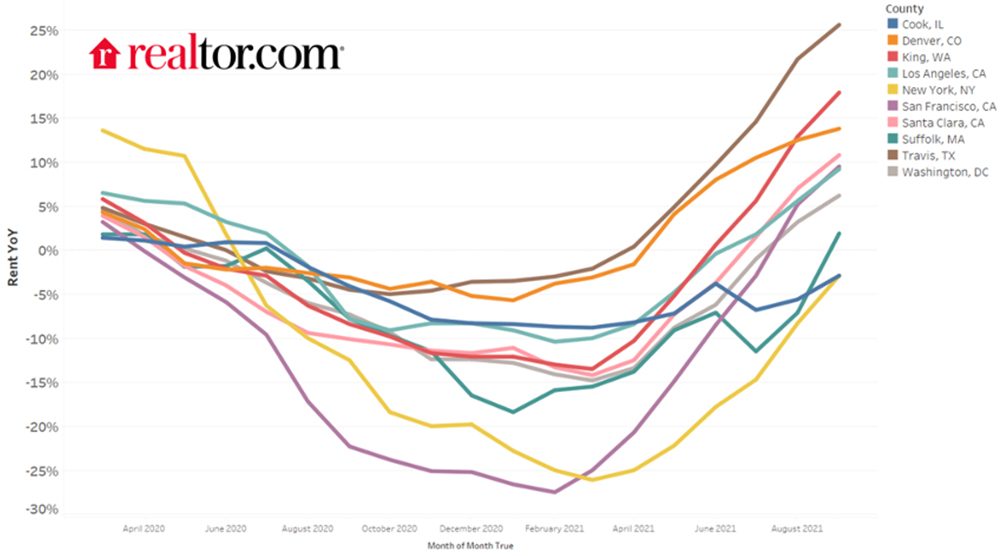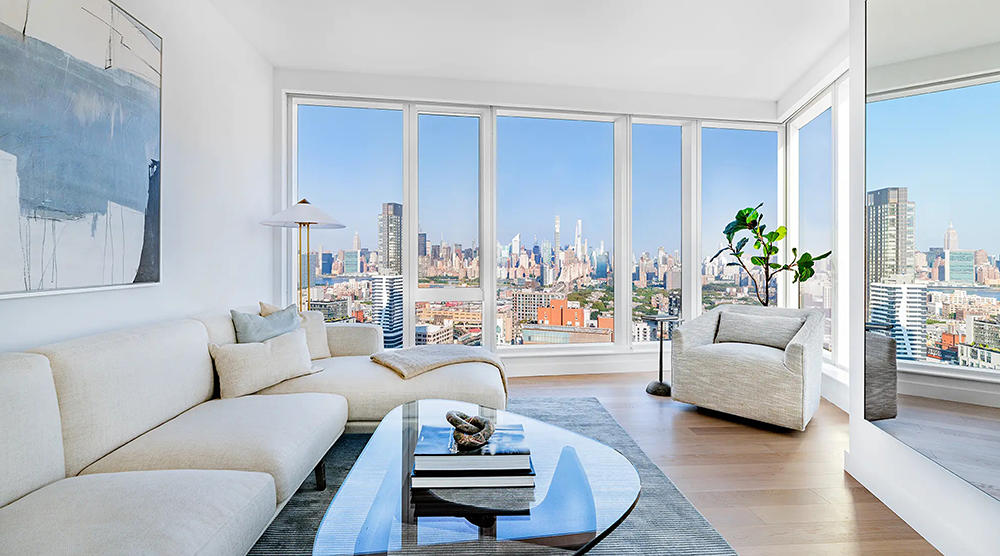
The rental market has changed. Here’s how to win in a post-Covid world.
The Covid-19 pandemic changed the way Americans live. Almost overnight, tens of millions of people transitioned from working in an office to working from home, with the percentage of those working remotely increasing nearly threefold. Untethered to a particular location, city dwellers retreated to the suburbs, exurbs, and beyond. As a result, rents plummeted in major cities across the country.
But there are signs that the future of remote work is no longer certain. Covid turned Wall Street into a ghost town. Now, big banks such as JPMorgan Chase and Goldman Sachs have scheduled definitive dates for their employees to return to the office, citing high vaccination rates, low case counts, and widely available Covid tests. And major tech companies are investing billions in reinvigorating the work environment. Amazon is leasing new office space in Seattle to make room for 10,000 employees. Google is buying entire buildings in New York City and London, where it is expanding its office capacity by nearly 50%.
Office Occupancy on the Rise
Data from the security firm Kastle Systems showed that office occupancy across the country was at an average of nearly 40% of pre-Covid levels at the end of February, up from 23% in early January. A majority of employers in New York City expect daily attendance in their offices to exceed 50% on an average weekday by late March, according to a recent report by the Partnership for New York City.
As people flock back to cities to return to the office, real estate markets are once again booming. But pandemic-related delays and an increase in the price of construction materials have exacerbated housing shortages in many of the country’s technology and business hubs. The upshot is that real estate—just like gas, used cars, and beef—is a victim of high demand and low supply: Rents in major urban areas, including Los Angeles, Seattle, and Denver, have hit an all-time high.

At the same time, the “great resignation” has propelled salaries higher across all income levels. Young professionals now have more money than ever to spend on their homes—and they are willing to spend a lot. Demand for two-bedroom apartments, in particular, is driving a national surge in rent, according to a report by Realtor.com.
The need for multifamily developments that provide space to live and work is greater than ever before. Even as companies implement permanent return-to-office plans, many employees are going to maintain some sort of hybrid work arrangement. Since employees will likely continue to work from home a few days each week, their expectations are high. Multifamily developers need to design buildings that cater to the lifestyle changes brought about by the pandemic. This will require a fresh understanding of what tenants want and a strategic approach to meeting these evolving demands and staying ahead of the competition with new and differentiated amenities.
The Post-Covid Rental Requirements
According to a recent survey by Rent.com, tenants want innovative technology that automates key components of the home while giving them insights and control—from smart security systems that help them monitor their homes from a distance to energy-efficient devices such as smart lighting that automatically adjusts based on occupancy or daylight. Tenants are driving demand for buildings that optimize their health and wellness, with abundant natural light and views of the outdoors and sensors that track indoor environmental quality. And they want a home designed with flexible, functional spaces that allow seamless work-life integration, such as built-in desks, shared workspaces, and an atmosphere that inspires creativity and productivity.
View Smart Windows, which use artificial intelligence to automatically adjust their tint in response to the sun, can provide all three.
By maximizing natural light and views of the outdoors while optimizing building occupant comfort, View Smart Windows make multifamily developments a better place to live and work. Multiple studies have shown that View Smart Windows generate significant health benefits for building occupants. And View’s cloud-connected smart building network provides a flexible technology backbone that can be leveraged to connect, control, and continually upgrade multiple smart home applications—from smart locks to smart thermostats, air quality sensors, and more—on a unified, secure system.
 Image courtesy of www.svenlic.com
Image courtesy of www.svenlic.com
At the end of the day, the buildings that stand out from the crowd will attract the attention — and dollars — of tenants flocking back to cities. By installing View at Sven, its 71-story apartment tower in Long Island City, Queens, the Durst Organization was able to maximize panoramic views of downtown Manhattan and achieve higher rents. The “wow factor” is important, and View Smart Windows are a differentiator in competitive markets.
View Smart Windows are currently designed into 1,630 units and more than 2.5 million square feet of multifamily developments. Learn more about the benefits of View Smart Windows for multifamily properties.